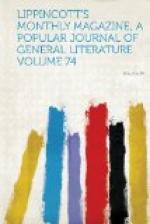Prior to the middle of the twelfth century Vienna appears to have been a town of little importance. In fact, the precise time when the name Wien first occurs is in dispute. Giesebrecht discovered it in documents purporting to date from the beginning of the eleventh century, but the genuineness of the documents is doubted by most historians. The town is mentioned several times in the Nibelungenlied, and described as existing in the times of Etzel (Attila, king of the Huns). But this is undoubtedly the invention of popular fancy. The Nibelungenlied was put into its present shape between the middle and the end of the twelfth century. The poet has changed more than one feature of the original saga, has blended, not unskillfully, primitive Teutonic myth with historic personages and events of the early Middle Ages, and has interpolated sayings and traditions of his own times. The Viennese of the twelfth century sought, with pardonable vanity, to invest their town with the sacredness of antiquity. But we can scarcely allow their claims. On the contrary, we must deny all continuity between the Vindobona of the fourth and the Wien of the twelfth century. The Roman castrum disappeared, the Babenberg capital appeared, but between the two there is an unexplored gulf. Yet this incipient Vienna, although only the capital of a ducal family that had a hard fight at times for existence, holds an honorable position in the annals of German literature. The Babenberg dukes were generous patrons of the Muses. Their court was frequented by minnesingers and knights-errant. Their praises were sung by Walther von der Vogelweide, Ulrich von Lichtenstein and others. Walther, in his ode to Duke Leopold, has almost anticipated Shakespeare, when he sings—
His largess, like the gentle rain,
Refresheth land and folk.
Vienna and the memorable Wartburg in Thuringia were the acknowledged centres of taste and good breeding. They were the courts of last resort in all questions of style, grammar and versification.
It will not be necessary to follow the growth of Vienna in detail during the last six hundred years. The dangers to which the city was exposed from time to time were formidable. They came chiefly from two quarters—from Bohemia and from Hungaro-Turkey. Charles IV. and Wenzel favored the Bohemians at the expense of the Germans, and preferred Prague to Vienna as a residence. The Czechish nation increased rapidly in wealth and culture until, having embraced the doctrines of Huss, it felt itself strong enough to assert a quasi-independence. The Hussite wars which ensued in the fifteenth century ended in the downfall of Bohemia. But the Austrian duchies, and even Bavaria and Saxony, did not escape without cruel injuries. More than once the fanatic Taborites laid the land waste up to the gates of Vienna. The Reformation, a century later, did not take deep root in Austria. At best it was only tolerated,




